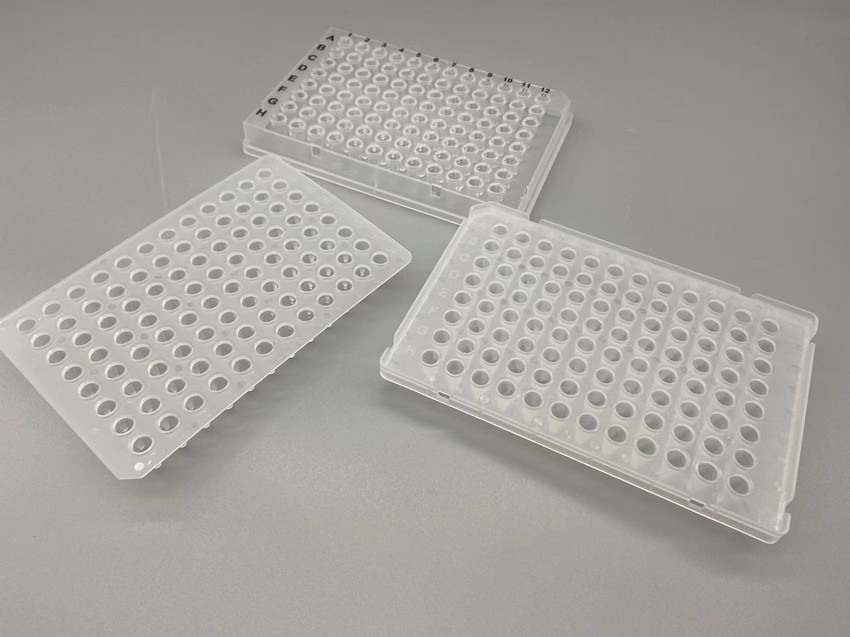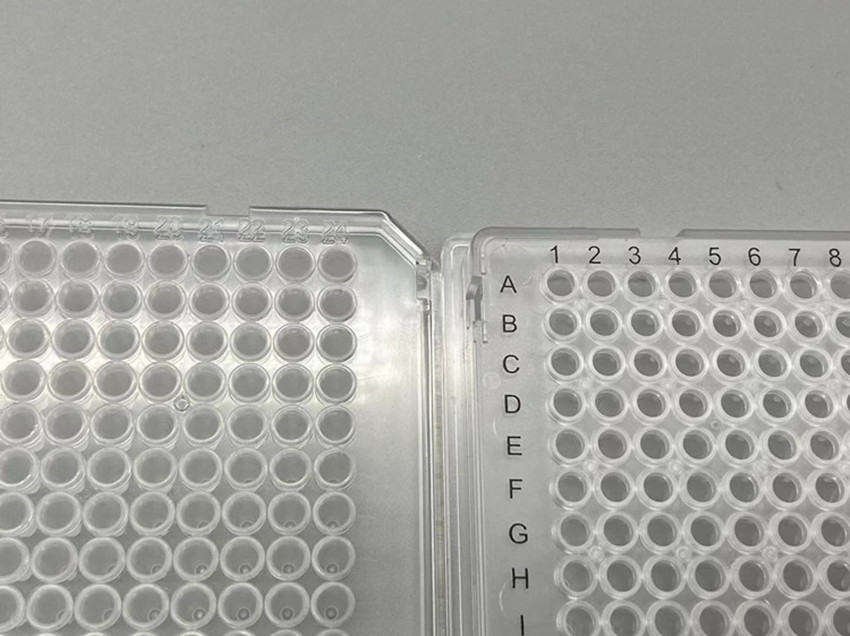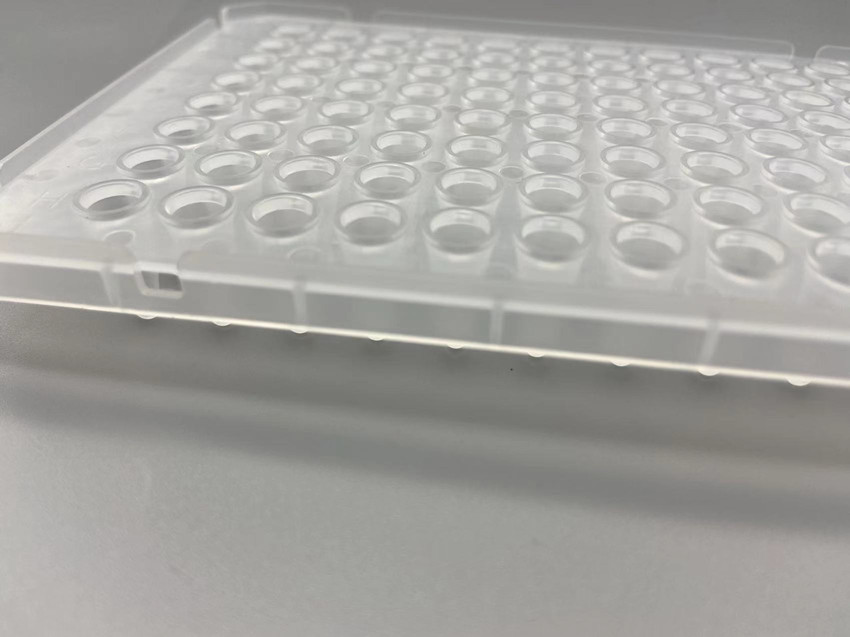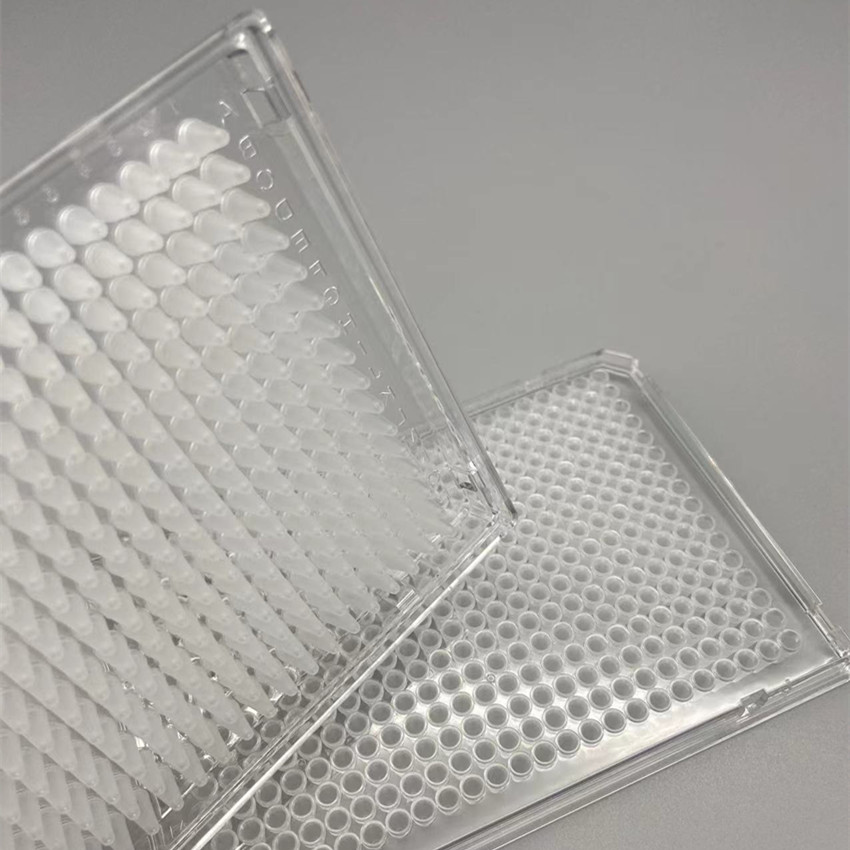PCR is a sensitive and effective method for amplifying a single copy of a target DNA sequence to millions of copies in a short period of time. Therefore PCR plates for PCR reactions must avoid the presence of contaminants and inhibitors, yet be of high quality to guarantee optimal PCR results. How should I choose a PCR plate?

Generally, there are no skirt, half skirt and full skirt.
-No skirt, can be used in most PCR or qPCR instruments, but not for automated applications. The stability of the pipetting process is not high.
-Half-skirt, can be adapted to label or apply barcode and automated applications. Most Applied Biosystems PCR instruments use half-skirt plates for better pipetting stability.
-Full skirt, ideal for automated applications and can also be adapted for labeling or barcode applications. Good mechanical strength, suitable for PCR instruments with protruding modules and high stability during pipetting.


In order to ensure clear and easy to read, PCR plates need to be marked with black print on the surface, usually with ink printing or laser printing.
-Ink printing, easy to cause product contamination, but easy to observe clearly.
-Laser printing, no product contamination, stronger adhesion, high production efficiency

JYBIO provide two options for customers with different requirements

-Full flat plate design is suitable for most PCR instruments, easy to seal and handle.
-The raised edge plate design is good adaptability for some PCR instruments (e.g. Applied Biosystems PCR instruments) and helps to balance the hot cover pressure without the need for adapters, ensuring good heat transfer and reliable experimental results.


It is recommended to choose dual-material PCR plates, using polypropylene (PP) with high heat transfer efficiency and low adsorption of biological molecules such as nucleic acids and proteins as the thin-walled tube material, and polycarbonate (PC) with better thermal and mechanical stability performance as the plate frame material, thus taking advantage of both.
The advantages of the dual material are: savings on reaction reagents by reducing thermal expansion of the PCR plate during PCR experiments, preventing sample evaporation, and reducing changes in the PCR reaction system. Improves the consistency of PCR reactions and increases the accuracy of results.
Compared with other materials, PP can be made very thin and has good heat transfer, making it an excellent PCR plate hole material. However, PP material is not hard enough and tends to expand in all directions when heated, and the sliding mouth of the tube affects the seal, resulting in the loss of liquid in the tube. Sample evaporation can lead to a variety of undesirable consequences, and the different evaporation rates between plate wells can lead to difficulty in quantifying experimental results, which seriously affects the accuracy of results.
Therefore, the dual-material plate with PC material for the frame of the plate gives the plate higher hardness and thermal stability, and the loss of liquid from the outer plate wells after heating is less than 20% of that of an ordinary plate, which can ensure the reliability of the results as much as possible, and its effect is more significant and important in qPCR experiments.


The cutting corner is a corner missing to the PCR plate, depending on the instrument to be adapted. The cutting corner may be located at position H1, H12 or A12 in a 96-well plate, or at position A24 in a 384-well plate.

ANSI/SBS format For compatibility with different automated liquid handling high-throughput systems, PCR plates should conform to the American National Standards Institute (ANSI) and the Society for Biomolecular Sciences (SBS, now part of the Society for Laboratory Automation and Screening (SLAS)). ANSI/SBS-compliant plates have standard dimensions, heights, well positions, etc., and thus facilitate automated processing.

There is a raised edge around the hole. This design can help to seal with sealing film to prevent evaporation.
In order to meet the various needs of customers, JYBIO offers different designs such as no-skirt, semi-skirt and full-skirt PCR plates, with white, frosted and transparent tubes, in 40ul, 100ul and 200ul sizes. If you have any demands, feel free contact us!
384-well PCR plates 96-well pcr plates 100ul 200ul PCR plates Roche pcr plates 100ul High-profile PCR plates
Contact: JYBIO
Phone: +86 158 7998 2901
Tel: 028-87033305
Email: info@jybioscience.com
Add: 10th Floor,Buiilding 1, No.68 Julong Road,Wuhou District Chengdu,Sichuan,CN
We chat
